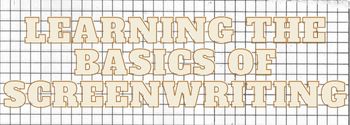Traditions will be challenged, debated, and torn apart. Once unquestioned and sacred, the way of life would be rewritten and questioned. Before this time, it was not common for women to have any occupation or hold any of the rights of women. WWII was not just about fighting for freedom in a country; it also fought on a new front: the homefront. Many people were rumored to have been Rosie, but the American idea of Rosie The Riveter was what really made an impact on the country. Rosie the Roveter was the face and symbol of the United States during WWII.
Many women were considered to be Rosie the Riveter's face. Rosie the Riveter was an American icon. Rosie represented hardworking, determined, low-to-middle class women who struggled to save their families, feed their families, and win wars. Rosie the Roveter was often credited with being the face of Rosalind Perry Walter, Naomi Parker Fraley, and Geraldine Hoffman Doyle, just to name some. Rosie was the face and symbol of every American woman. Rosie the Riveter became more than an icon. Draft took in veterans and workers from the industry, all of which were male. This resulted in a dramatic decrease of production and wartime supplies. Women who either survived the first world War or were born into it knew that they would not be able to survive another. Because of the progress in machinery, industry and technology, WWI was so very different from WWII. The only workforce at this time was men. There was an urgent need for these revenues to continue. Since the majority of males were living overseas, and many of them were either elderly or disabled, the women of the United States decided it was time to break the wall that had been built before. This was the beginning of a revolution that spanned the globe, inspiring women around the world to fight for their rights and causing a shift in society that has not stopped but continues to grow every day.
There were many jobs available for women in the aeronautical and industry industries. These included streetcar drivers, truck drivers, laboratory technicians as well as radio operators. Photo analyzers, radio operators as well as testers for new aircraft. Pilots also served as trainers for anti-aircraft gunners. It is just a fraction of what these women did to their country. Some were patriotic, others because of their brothers, husbands and sons who were in the military, and they wanted to support them through all means. Many more people served in the military and then went on to work after losing their support system at home. They needed the income they received.
The war had changed everything. Women's lives were forever altered. Even though women proved they could hold a man's title and position, society refused to accept the new generation. America required them to fill in for the men who had left, and expected them not to resign when they returned. They did what they could, and were more successful than the boys. Even though society did not have any reason to reject these strong, resilient women from the mainstream of society, their socioeconomic status didn't change. Rosie, the Riveters, fought for the country that did not acknowledge their sacrifices, tears, or contributions. General Eisenhower said that the United States would not be able to win the war without women's help.
On September 2, 1945, the Second World War ended. Women were surprised to see their former domestic helpers as warriors when they returned home to their mothers, wives, and sisters. More women were fired and lost their jobs after returning home with more men. Six years of war saw America depend on women to ensure its success. After six years of being a significant part of American society, women are now "no longer needed" and want to continue their work and find new roles within society. These women were called "unlovely," "lost," "ridden by guilt complexes," and "man-hating" — all inappropriate terms for school papers. Women who did not leave the workforce were usually degraded or placed at the bottom of the totem tree.
U.S. Women's Bureau in 1944 surveyed women to find out if 75 percent intended to work after the war. 84 percent desired to stay in their manufacturing jobs. Surveys conducted during WWII found that the vast majority of warworkers wanted to keep working after the war. However, they were often forced out or pressured to leave. In fact, three-and-a half million women left the workforce in just one year. Slowly, however, women began to return to the workforce because they were more economically able, wanted more consumer products or felt more necessary. Some women returned to work because they enjoyed the satisfaction.
Despite the fact they did more work than men, female workers did not earn half as much as their male counterparts. It didn't matter how many years they worked at the facility, how good they did their job, or how much they liked it. This was a problem for male employers as well. Although women could still build military equipment and pilot aircrafts from scratch, they couldn't earn the same wages as men.
While men were able to regain their roles in society, it was no longer possible for them to be considered superior to women. Women proved that they were capable of accomplishing anything that a man could while living in freedom. Divorce rates increased from 16 per 100 marriages in 1940 to 27 per 100 marriages between 1944 and 1945. One in six marriages ended with divorce in 1940. However, after World War II, where women had more control and confidence, one in four marriages ended with divorce in 1946. It is possible that some of the husbands didn't like women's empowered and untraditional attitudes. Women fought another war for the next twenty-years. Women fought for equality in nontraditional career options, equal pay and equal rights.
The draft caused a shortage of men in WWII. However, some people signed up for it willingly. This forced women to take their place. Women were many things in WWII, including soldiers, workers and sole home-providers. They excelled in their job and were often better at it than their male colleagues. After the war, women enjoyed their work and wanted to do it again. Women lost their jobs and men returned. However, the war changed everything for women. These courageous, brave women played a crucial role in the war's success. If the Allied Powers victory hadn't been achieved, the roles of women today would have changed dramatically.
Rosie the Riveter's iconic image encouraged many women at home to pursue their dreams and achieve goals they never dreamed possible. Rosie the Riveter represented courage, endurance and perseverance in the lives of thousands of women. But, there were other women on the battlefield, and one of them was a spy.

